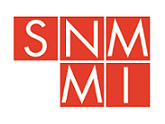Specialty Designation
Fellowship
In same state as program
2
Number of accredited programs
18
Length of accredited training
Minimum number of prior years required
Offers graduate year 1 positions, available immediately upon medical school completion
No
Average number of PY1 interviews
2.30
Percent of programs requiring Step 1 score for interview
77.70
Percent of programs requiring Level 1 score (for DOs) for interview
22.20
Total number of active residents/fellows
Average number of residents/fellows
0.50
Average percent female
27.70
Average percent international medical graduates
77.70
Average number of full-time physician faculty
8.30
Average number of part-time physician faculty
0.70
Average percent female full-time physician faculty
23.70
Average ratio of full-time physician faculty to resident/fellow
3.80
Average hours on duty per week
48.10
Average maximum consecutive hours on duty
12.70
Average days off duty per week
1.80
Average percent of training in hospital outpatient clinics
69.00
Average percent of training in non-hospital ambulatory care community settings
0.00
Average number of days of vacation
17.80
Average resident/fellow compensation
Specialty Overview
Nuclear radiology involves the diagnostic and therapeutic use of radioactive materials using unsealed sources.
Nuclear radiologists select, interpret, and perform procedures, including diagnostic imaging by external detection of radionuclides, diagnostic invivo or combination invivo/invitro procedures that involve the administration and detection of radioactivity by non-imaging means, and therapeutic administration of radionuclides. Nuclear medicine uses small amounts of radioactive material to diagnose and determine the severity of or treat a variety of diseases, including many types of cancers, heart disease, gastrointestinal, endocrine, neurological disorders and other abnormalities within the body.
